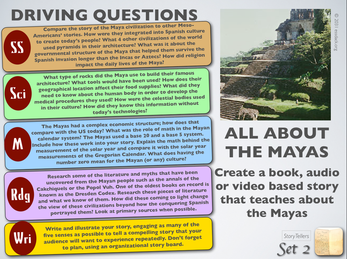 Click the card to download your FREE copy of the card, today only!
Click the card to download your FREE copy of the card, today only! Today's featured LifePractice PBL recipe card for free download is "All About the Mayas" where students are challenged to create a book, audio, or video-based story that tells about the Mayas. Granted, that is a pretty open challenge, but the cards are designed to leave a layer of "optimal ambiguity" in the work so students and teachers are able to put their own spin or emphasis to their creations. And that's what we're going to be doing in this blog post. In addition to giving out a free sample card (download that card here), we'll also be highlighting a few of the possibilities for how a teacher might use this card with her classes, based on the questions that I'm frequently asked by real teachers with real kids in real classrooms.
But let's start at the beginning.
Project Based Learning is about learning by doing.
With this PBL card, students are being given a challenge that in order to solve it, they have to gather/learn information and develop skills in the process of answering the challenge.
The role of the teacher is to...
Students are encouraged to take an active role in exploring the mysteries of the Mayas and discovering what was interesting, as well as the bigger picture of their civilization. They then are asked to synthesize that information into a product that is informative and engaging.
So now we've heard the basics, how is the card structured?
If you look to the picture in this post, you'll see that a story-telling challenge is given. You'll also see many driving questions that are categorized into the core content categories of Social Studies, Science, Math, Reading, and Writing. While these questions are standards-based, it isn't an all-encompassing list of all possible questions. It's impractical to post all potential questions/topics that could be incorporated. Therefore, as you're looking at the card, if you have other ideas for questions that might be explored, please do add them for your own classes! Additionally, in reviewing the potential driving questions, perhaps you can see something you can hone in on for deeper learning. Go for it! Have the students dig deeper in that one content area. Nonetheless, we have created driving questions within each of the core content areas so that the projects are able to be as integrated as possible. If you see other questions in other content categories you might feel comfortable incorporating with the assistance of a co-teacher, that is highly encouraged.
Should teachers just put the driving questions onto a worksheet to hand to the students?
Honestly, that was not the design of the card, nor is it in true PBL form. The questions are meant for teachers to ask to students as they're in the process of learning. As they are exploring a particular thread of a project, the teacher should regularly be asking driving questions to spur the exploration deeper. However, a teacher may find a plan that is different. As long as we remember that it's "learning by doing," and that the teacher isn't the deliverer of information, we'll understand that authentic, engaged learning doesn't come from worksheets and will be fine!
Who can use this card?
The LifePractice PBL cards are purposefully designed to be highly flexible in order to address the needs of elementary through high school learners and this card is no exception. A teacher can ascertain the ability levels of her students and decide to go into deeper or more complex learning by deciding which questions she asks the students in order to go deeper into the desired content. Or she might decide that the age or readiness of her students calls for less-complex work. That's fine!
Likewise a teacher doesn't need to know all the answers to the questions that might arise in an investigation; this Maya card calls for students to know how to find high-quality information, how to cite their sources, and sometimes even to triangulate multiple sources in order to prove a fact, freeing them up to bring new information to the project that the teacher may not have originally intended to include or even known about. Now that's true PBL!
Do we have to create videos or podcasts to make this work?
Not at all. Again, the cards are designed for ultimate flexibility so that if you're in a school with limited (or no) technology, you'll still able to create a strong learning environment by having the students create a reader's theatre, skit, poetry, or other live performance where storytelling is elevated to an artform. Likewise, if you're decked out with the latest in software and hardware, you will certainly be able to make use of all the tools you care to. Consider what is important information and skills that you want your students to practice and learn and get going!
Does this project have to be done in one day? Or will this take a week? Or a month? or...?
The timeline for implementation is your choice. It is easy to allow projects to be "time vampires" for our classes, as we watch the days continue to tick away and the students continuously begging for "just one more day." That time issue will never go away. Therefore, before you begin the project, be sure you're clear in your mind regarding how much time you have available and help the kids learn how to prioritize their time and plans with the use of mid-point re-group meetings.
Or, if you have the students for a full day, this project can be done in one day.
Or it can be done in 3 days, in 1 hour increments.
Or it can be done in ... do you get the point? You could very easily work on this project for an entire semester. It all depends upon the depth and time you're willing to ask the kids to put into it.
My strongest suggestion is that if this is one of the first projects you'll be doing with your students, you'll likely want to err on the side of providing a shorter time period than longer. Sometimes, before students have developed a sustained attention span and a tolerance for the "optimally ambiguous" learning environment, they need shorter projects to keep frustration to a tolerable level for both the teacher and the students.
Can I do this with multiple classes?
Each class could create their own story. Or you might have multiple groups inside each class creating their own story. Or they could create a "chapter" of one larger story. Or you could have all your classes working on one story that has to mesh together. Or you could partner up with classes from another school to collaborate on the story.
Can you tell the variations are endless for this "All About the Mayas" card? That's the flexibility of PBL. If you run across someone who gives you lots of templates and tells you that PBL is prescriptive, that there's only one right way to do it, they are likely wanting to sell you a high-priced system that will end up not being PBL in the long run. As mentioned earlier, these strategies outlined in this post are only a few of the learning possibilities that can be created with our cards. And all of them can be transferred to each of our LifePractice PBL cards.
Download the free recipe card, available today only, and check out the other LifePractice PBL cards we offer as well.
And be sure to let us know if you have any questions or if you'd like us to come work with your colleagues and students!
Related articles
But let's start at the beginning.
Project Based Learning is about learning by doing.
With this PBL card, students are being given a challenge that in order to solve it, they have to gather/learn information and develop skills in the process of answering the challenge.
The role of the teacher is to...
- guide the learning by helping to keep the interest high by creating interesting and challenging trails to follow.
- help students connect with expertise and
- assist the students in citing high-quality sources of information. And most of all,
- facilitate successful group work and independent thinking, and
- help to create a sense of urgency to completing the work.
Students are encouraged to take an active role in exploring the mysteries of the Mayas and discovering what was interesting, as well as the bigger picture of their civilization. They then are asked to synthesize that information into a product that is informative and engaging.
So now we've heard the basics, how is the card structured?
If you look to the picture in this post, you'll see that a story-telling challenge is given. You'll also see many driving questions that are categorized into the core content categories of Social Studies, Science, Math, Reading, and Writing. While these questions are standards-based, it isn't an all-encompassing list of all possible questions. It's impractical to post all potential questions/topics that could be incorporated. Therefore, as you're looking at the card, if you have other ideas for questions that might be explored, please do add them for your own classes! Additionally, in reviewing the potential driving questions, perhaps you can see something you can hone in on for deeper learning. Go for it! Have the students dig deeper in that one content area. Nonetheless, we have created driving questions within each of the core content areas so that the projects are able to be as integrated as possible. If you see other questions in other content categories you might feel comfortable incorporating with the assistance of a co-teacher, that is highly encouraged.
Should teachers just put the driving questions onto a worksheet to hand to the students?
Honestly, that was not the design of the card, nor is it in true PBL form. The questions are meant for teachers to ask to students as they're in the process of learning. As they are exploring a particular thread of a project, the teacher should regularly be asking driving questions to spur the exploration deeper. However, a teacher may find a plan that is different. As long as we remember that it's "learning by doing," and that the teacher isn't the deliverer of information, we'll understand that authentic, engaged learning doesn't come from worksheets and will be fine!
Who can use this card?
The LifePractice PBL cards are purposefully designed to be highly flexible in order to address the needs of elementary through high school learners and this card is no exception. A teacher can ascertain the ability levels of her students and decide to go into deeper or more complex learning by deciding which questions she asks the students in order to go deeper into the desired content. Or she might decide that the age or readiness of her students calls for less-complex work. That's fine!
Likewise a teacher doesn't need to know all the answers to the questions that might arise in an investigation; this Maya card calls for students to know how to find high-quality information, how to cite their sources, and sometimes even to triangulate multiple sources in order to prove a fact, freeing them up to bring new information to the project that the teacher may not have originally intended to include or even known about. Now that's true PBL!
Do we have to create videos or podcasts to make this work?
Not at all. Again, the cards are designed for ultimate flexibility so that if you're in a school with limited (or no) technology, you'll still able to create a strong learning environment by having the students create a reader's theatre, skit, poetry, or other live performance where storytelling is elevated to an artform. Likewise, if you're decked out with the latest in software and hardware, you will certainly be able to make use of all the tools you care to. Consider what is important information and skills that you want your students to practice and learn and get going!
Does this project have to be done in one day? Or will this take a week? Or a month? or...?
The timeline for implementation is your choice. It is easy to allow projects to be "time vampires" for our classes, as we watch the days continue to tick away and the students continuously begging for "just one more day." That time issue will never go away. Therefore, before you begin the project, be sure you're clear in your mind regarding how much time you have available and help the kids learn how to prioritize their time and plans with the use of mid-point re-group meetings.
Or, if you have the students for a full day, this project can be done in one day.
Or it can be done in 3 days, in 1 hour increments.
Or it can be done in ... do you get the point? You could very easily work on this project for an entire semester. It all depends upon the depth and time you're willing to ask the kids to put into it.
My strongest suggestion is that if this is one of the first projects you'll be doing with your students, you'll likely want to err on the side of providing a shorter time period than longer. Sometimes, before students have developed a sustained attention span and a tolerance for the "optimally ambiguous" learning environment, they need shorter projects to keep frustration to a tolerable level for both the teacher and the students.
Can I do this with multiple classes?
Each class could create their own story. Or you might have multiple groups inside each class creating their own story. Or they could create a "chapter" of one larger story. Or you could have all your classes working on one story that has to mesh together. Or you could partner up with classes from another school to collaborate on the story.
Can you tell the variations are endless for this "All About the Mayas" card? That's the flexibility of PBL. If you run across someone who gives you lots of templates and tells you that PBL is prescriptive, that there's only one right way to do it, they are likely wanting to sell you a high-priced system that will end up not being PBL in the long run. As mentioned earlier, these strategies outlined in this post are only a few of the learning possibilities that can be created with our cards. And all of them can be transferred to each of our LifePractice PBL cards.
Download the free recipe card, available today only, and check out the other LifePractice PBL cards we offer as well.
And be sure to let us know if you have any questions or if you'd like us to come work with your colleagues and students!
Related articles
- Featured PBL: The South's Civil War Submarine, the H.L. Hunley (gingerlewman.wordpress.com)
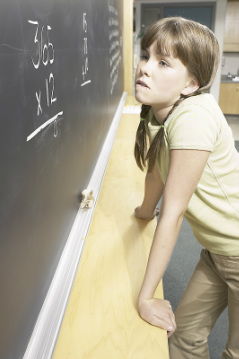
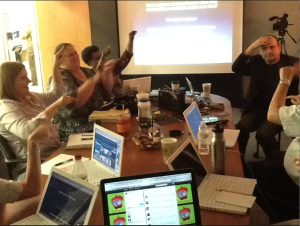
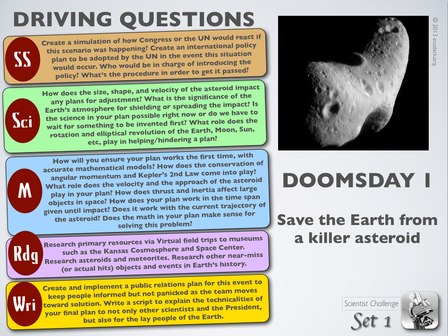
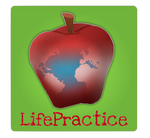

 RSS Feed
RSS Feed
